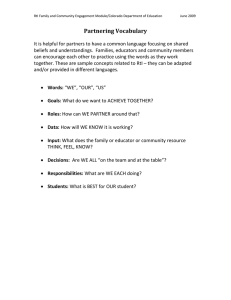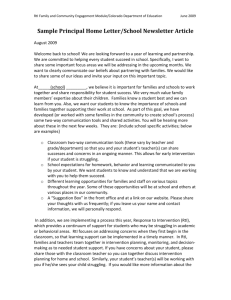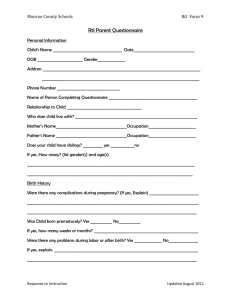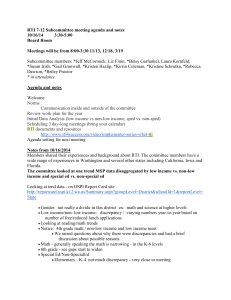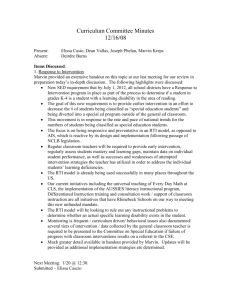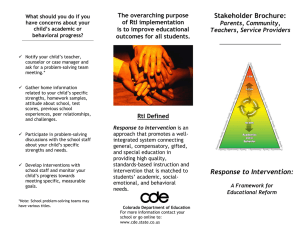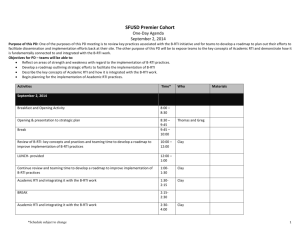Beliefs on RTI Scale Document
advertisement
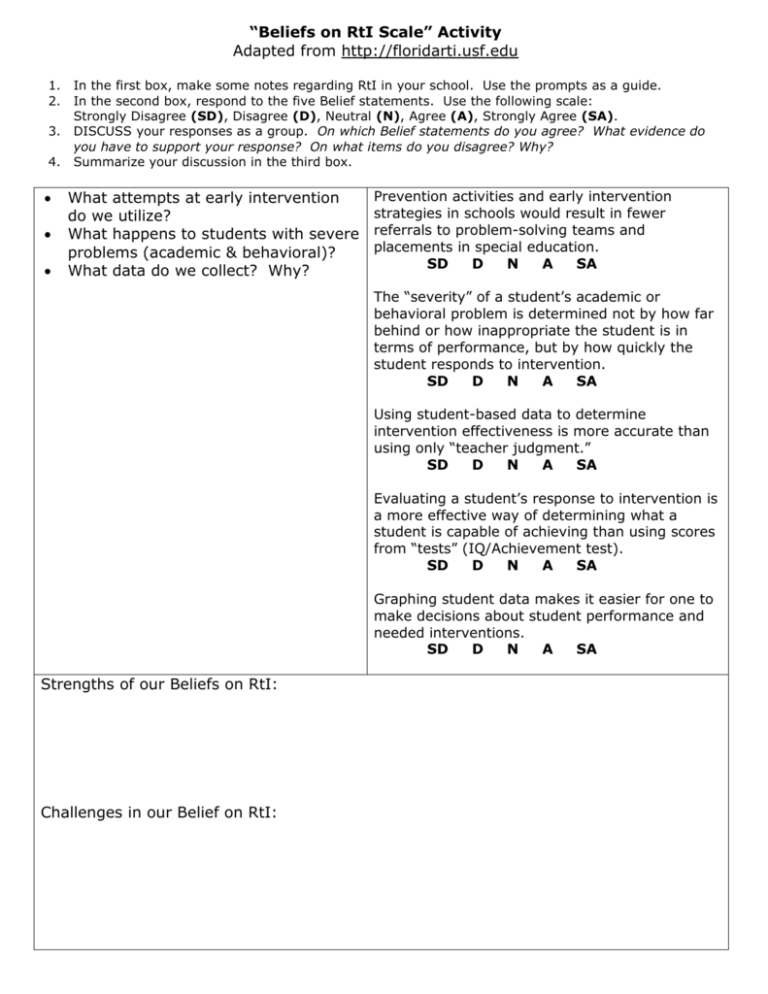
“Beliefs on RtI Scale” Activity Adapted from http://floridarti.usf.edu 1. 2. 3. 4. In the first box, make some notes regarding RtI in your school. Use the prompts as a guide. In the second box, respond to the five Belief statements. Use the following scale: Strongly Disagree (SD), Disagree (D), Neutral (N), Agree (A), Strongly Agree (SA). DISCUSS your responses as a group. On which Belief statements do you agree? What evidence do you have to support your response? On what items do you disagree? Why? Summarize your discussion in the third box. What attempts at early intervention do we utilize? What happens to students with severe problems (academic & behavioral)? What data do we collect? Why? Prevention activities and early intervention strategies in schools would result in fewer referrals to problem-solving teams and placements in special education. SD D N A SA The “severity” of a student’s academic or behavioral problem is determined not by how far behind or how inappropriate the student is in terms of performance, but by how quickly the student responds to intervention. SD D N A SA Using student-based data to determine intervention effectiveness is more accurate than using only “teacher judgment.” SD D N A SA Evaluating a student’s response to intervention is a more effective way of determining what a student is capable of achieving than using scores from “tests” (IQ/Achievement test). SD D N A SA Graphing student data makes it easier for one to make decisions about student performance and needed interventions. SD D N A SA Strengths of our Beliefs on RtI: Challenges in our Belief on RtI:
